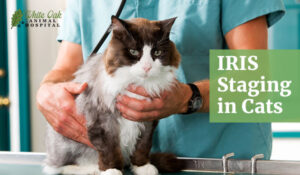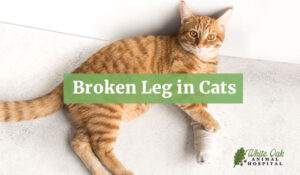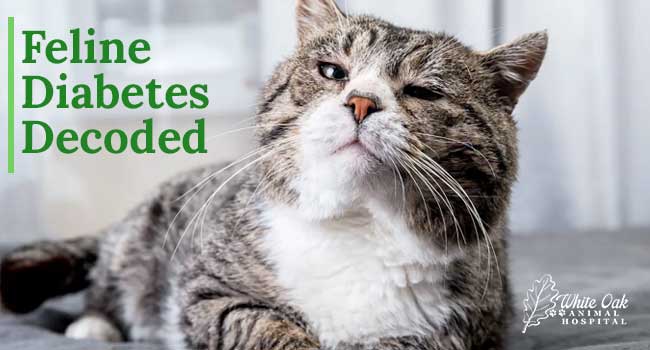
Feline diabetes is a metabolic disorder that affects cats, disrupting their ability to regulate blood sugar levels properly. This condition shares similarities with diabetes in humans but manifests uniquely in feline physiology. The significance of Feline diabetes for cat owners is immense, as it poses potential health risks and requires diligent management. Recognizing symptoms for early detection and management is of paramount importance.
Feline Diabetes can lead to serious complications if left untreated, such as kidney disease, neuropathy, and even life-threatening conditions like diabetic ketoacidosis. Timely intervention can help mitigate these risks and improve the quality of life for affected cats. Feline Diabetes demands vigilance, but its management can result in improved health outcomes and prolonged life for cats. Owners who stay alert to symptoms and work closely with veterinarians contribute significantly to their feline companions’ well-being.
Deciphering Feline Diabetes: Cracking the Code for a Healthier Cat
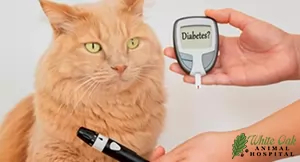 Feline diabetes is a significant metabolic disorder that holds a pivotal role in the context of cat health. This condition disrupts the delicate balance of blood sugar regulation in cats, impacting their overall well-being. Feline diabetes arises when the cat’s body struggles to produce or properly utilize insulin, the hormone responsible for regulating blood sugar levels.
Feline diabetes is a significant metabolic disorder that holds a pivotal role in the context of cat health. This condition disrupts the delicate balance of blood sugar regulation in cats, impacting their overall well-being. Feline diabetes arises when the cat’s body struggles to produce or properly utilize insulin, the hormone responsible for regulating blood sugar levels.
The relevance of Feline diabetes in the realm of cat health cannot be overstated. As a metabolic disorder, it not only affects how a cat’s body processes glucose but also has far-reaching implications for its organ systems. Cats with uncontrolled diabetes are at risk of experiencing adverse effects on their kidneys, nervous system, and even their eyesight due to the development of cataracts.
At its core, Feline diabetes significantly alters the way a cat’s body functions. Insulin resistance or inadequate insulin production leads to elevated blood sugar levels, a condition known as hyperglycemia. This persistent state of hyperglycemia can have cascading effects, contributing to weight loss despite an increased appetite, excessive thirst, and frequent urination.
Key Differences Between Feline Diabetes and Human Diabetes
Physiologically, Feline diabetes diverges from human diabetes due to the unique nature of feline metabolism. While both conditions involve improper regulation of blood sugar levels, the underlying mechanisms differ. Cats predominantly experience type 2 diabetes, characterized by insulin resistance and impaired insulin production, often linked to factors like obesity and genetics. In contrast, human diabetes encompasses both type 1 (insulin deficiency) and type 2 (insulin resistance), showcasing a broader range of causes and treatment approaches.
 Treatment strategies also diverge between feline diabetes and human diabetes. In human diabetes, oral medications and insulin injections are common, whereas feline diabetes management predominantly relies on insulin injections. This distinction arises due to the varying response of feline and human bodies to oral medications, with cats often requiring direct insulin administration for effective control.
Treatment strategies also diverge between feline diabetes and human diabetes. In human diabetes, oral medications and insulin injections are common, whereas feline diabetes management predominantly relies on insulin injections. This distinction arises due to the varying response of feline and human bodies to oral medications, with cats often requiring direct insulin administration for effective control.
The 6 Telltale Symptoms of Feline Diabetes
Increased Thirst and Urination
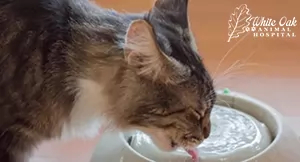 One prominent indicator is increased thirst and urination, where cats exhibit an unusual and persistent need for water while also urinating more frequently. This heightened thirst and frequency of urination stem from the body’s struggle to regulate blood sugar levels effectively. These symptoms often raise a red flag for cat owners, prompting them to seek veterinary attention. Recognizing increased thirst and urination as potential indications of feline diabetes is crucial for early detection and effective management.
One prominent indicator is increased thirst and urination, where cats exhibit an unusual and persistent need for water while also urinating more frequently. This heightened thirst and frequency of urination stem from the body’s struggle to regulate blood sugar levels effectively. These symptoms often raise a red flag for cat owners, prompting them to seek veterinary attention. Recognizing increased thirst and urination as potential indications of feline diabetes is crucial for early detection and effective management.
Weight Loss Despite Increased Appetite
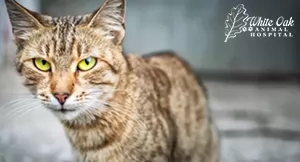 This occurrence can be attributed to the body’s inability to utilize glucose properly, leading to muscle breakdown and subsequent weight loss. Cats affected by feline diabetes might exhibit voracious hunger, yet their bodies cannot extract the necessary nutrients from food due to insulin-related issues. This symptom serves as a clear indicator for cat owners to be cautious and seek veterinary guidance promptly.
This occurrence can be attributed to the body’s inability to utilize glucose properly, leading to muscle breakdown and subsequent weight loss. Cats affected by feline diabetes might exhibit voracious hunger, yet their bodies cannot extract the necessary nutrients from food due to insulin-related issues. This symptom serves as a clear indicator for cat owners to be cautious and seek veterinary guidance promptly.
Lethargy and Weakness
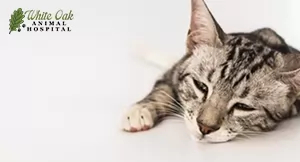 Cats affected by feline diabetes often experience a notable lack of energy and overall weakness due to their body’s struggle to regulate blood sugar levels. This condition hampers their ability to derive sufficient energy from glucose, leading to lethargy and reduced physical activity. Observing a normally active cat becoming lethargic can be concerning for owners, signaling a potential underlying issue.
Cats affected by feline diabetes often experience a notable lack of energy and overall weakness due to their body’s struggle to regulate blood sugar levels. This condition hampers their ability to derive sufficient energy from glucose, leading to lethargy and reduced physical activity. Observing a normally active cat becoming lethargic can be concerning for owners, signaling a potential underlying issue.
Change in Grooming Habits
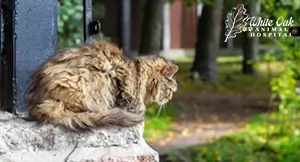 Cats that develop feline diabetes may exhibit alterations in their grooming routines due to the impact of elevated blood sugar levels on their overall health. This change can manifest as reduced grooming or increased disheveled appearance, which contrasts with the typical meticulous grooming behavior of cats. Cat owners who notice shifts in their pet’s grooming patterns should consider it a potential signal of an underlying health issue like feline diabetes.
Cats that develop feline diabetes may exhibit alterations in their grooming routines due to the impact of elevated blood sugar levels on their overall health. This change can manifest as reduced grooming or increased disheveled appearance, which contrasts with the typical meticulous grooming behavior of cats. Cat owners who notice shifts in their pet’s grooming patterns should consider it a potential signal of an underlying health issue like feline diabetes.
Sweet-Smelling Breath
The distinct odor arises from the cat’s body attempting to eliminate excess sugar through its breath, resulting in a mildly sweet or fruity aroma. This unusual breath odor, often accompanied by other symptoms, can be an important cue for cat owners to consider the possibility of feline diabetes. Cat owners who detect this sweet-smelling breath in their feline companions should be vigilant and seek veterinary attention promptly.
Cloudy Eyes (Cataracts)
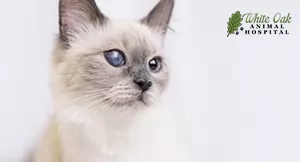 Feline diabetes can lead to the formation of cataracts, causing the lenses of a cat’s eyes to become opaque and cloudy. This condition can result from the prolonged exposure of the lenses to high levels of glucose in the bloodstream. Cat owners who observe cloudiness in their pet’s eyes should consider it a potential effect of feline diabetes and seek veterinary attention.
Feline diabetes can lead to the formation of cataracts, causing the lenses of a cat’s eyes to become opaque and cloudy. This condition can result from the prolonged exposure of the lenses to high levels of glucose in the bloodstream. Cat owners who observe cloudiness in their pet’s eyes should consider it a potential effect of feline diabetes and seek veterinary attention.
Consequences of Untreated or Poorly Managed Feline Diabetes
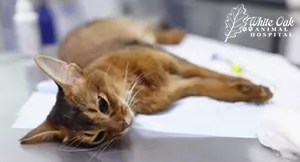 Neglecting this disease can lead to a host of severe complications that adversely impact a cat’s health and well-being. One of the potential risks is diabetic neuropathy, a nerve disorder resulting from prolonged uncontrolled blood sugar levels. This condition can cause pain, weakness, and difficulty in walking, affecting the cat’s mobility and overall comfort. Another peril is ketoacidosis, a life-threatening condition wherein the body starts breaking down fat for energy due to inadequate insulin, leading to a dangerous buildup of acidic ketones. Untreated feline diabetes can also contribute to an overall diminished quality of life for the cat, affecting their energy levels, playfulness, and engagement with their environment.
Neglecting this disease can lead to a host of severe complications that adversely impact a cat’s health and well-being. One of the potential risks is diabetic neuropathy, a nerve disorder resulting from prolonged uncontrolled blood sugar levels. This condition can cause pain, weakness, and difficulty in walking, affecting the cat’s mobility and overall comfort. Another peril is ketoacidosis, a life-threatening condition wherein the body starts breaking down fat for energy due to inadequate insulin, leading to a dangerous buildup of acidic ketones. Untreated feline diabetes can also contribute to an overall diminished quality of life for the cat, affecting their energy levels, playfulness, and engagement with their environment.
Additionally, untreated feline diabetes can lead to secondary health issues, including urinary tract infections and kidney problems, as the elevated sugar levels in the urine create an environment conducive to bacterial growth. Vision problems, such as cataracts, can occur due to high blood sugar damaging the lens of the eye. Neglected this disease can also result in uncontrolled weight loss, as the body breaks down muscle for energy when glucose is unavailable. Furthermore, cats with unmanaged diabetes are at a higher risk for heart and circulatory problems.
Diagnosis and Treatment of Feline Diabetes
Diagnosing this disease involves a comprehensive approach that typically includes blood tests and urinalysis. These diagnostic tools help veterinarians assess the cat’s blood sugar levels and the presence of glucose in the urine, both of which are crucial indicators of diabetes. Blood tests measure glucose concentrations in the blood, highlighting any persistent hyperglycemia that might point toward feline diabetes. Similarly, urinalysis detects elevated glucose levels in the urine, a sign that the kidneys are excreting excess glucose.
Upon diagnosis, a multifaceted treatment plan is essential for managing feline diabetes effectively. Dietary changes constitute a cornerstone of treatment, emphasizing high-protein, low-carbohydrate diets tailored to a cat’s carnivorous nature. This approach helps stabilize blood sugar levels and supports weight management.
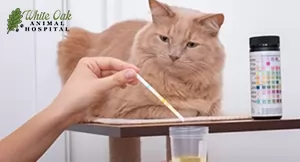 Insulin therapy plays a pivotal role in feline diabetes management, as many cats require direct administration of insulin to regulate blood sugar. Veterinarians guide insulin type, dosage, and administration techniques tailored to the cat’s needs. Lifestyle adjustments also contribute to feline diabetes management. Regular exercise aids in weight control and promotes insulin sensitivity, assisting in blood sugar regulation. Monitoring blood sugar levels at home can help cat owners track their pet’s response to treatment, enabling timely adjustments.
Insulin therapy plays a pivotal role in feline diabetes management, as many cats require direct administration of insulin to regulate blood sugar. Veterinarians guide insulin type, dosage, and administration techniques tailored to the cat’s needs. Lifestyle adjustments also contribute to feline diabetes management. Regular exercise aids in weight control and promotes insulin sensitivity, assisting in blood sugar regulation. Monitoring blood sugar levels at home can help cat owners track their pet’s response to treatment, enabling timely adjustments.
Cat owners are encouraged to prioritize their pet’s health by promptly seeking veterinary care if they suspect feline diabetes. Early diagnosis enables veterinarians to develop tailored treatment plans, which may include dietary adjustments, insulin therapy, and lifestyle modifications. For the best care, White Oak Animal Hospital emerges as a reliable option, boasting over 28 years of experience and having treated more than 6,000 pets.
White Oak Animal Hospital offers a unique advantage with integrative options not available elsewhere, including TCVM Telemedicine consultations. This holistic approach addresses feline diabetes comprehensively, addressing both traditional and alternative therapies. By choosing White Oak Animal Hospital, cat owners can access specialized care that caters to their pet’s unique needs, enhancing their chances of effectively managing feline diabetes and ensuring their beloved companions lead healthier, happier lives.
Related Posts
-
Effective Relief For Allergic Dog Symptoms
An allergic dog is easy to spot! Sure, all dogs itch and scratch, but you…
-
Everything You Need To Know About Cat Arthritis Symptoms
Like people and dogs, cats experience arthritis as they age. Sometimes young cats get arthritis…
-
Feline House Soiling and What You Can Do
Behavior problems, house soiling especially, can be one of the most frustrating topics to deal…
-
What Every Pet Owner Should Know About Pet Allergies
Whether human or pet, allergies usually prove to be a complicated, and sometimes frustrating, topic.…








